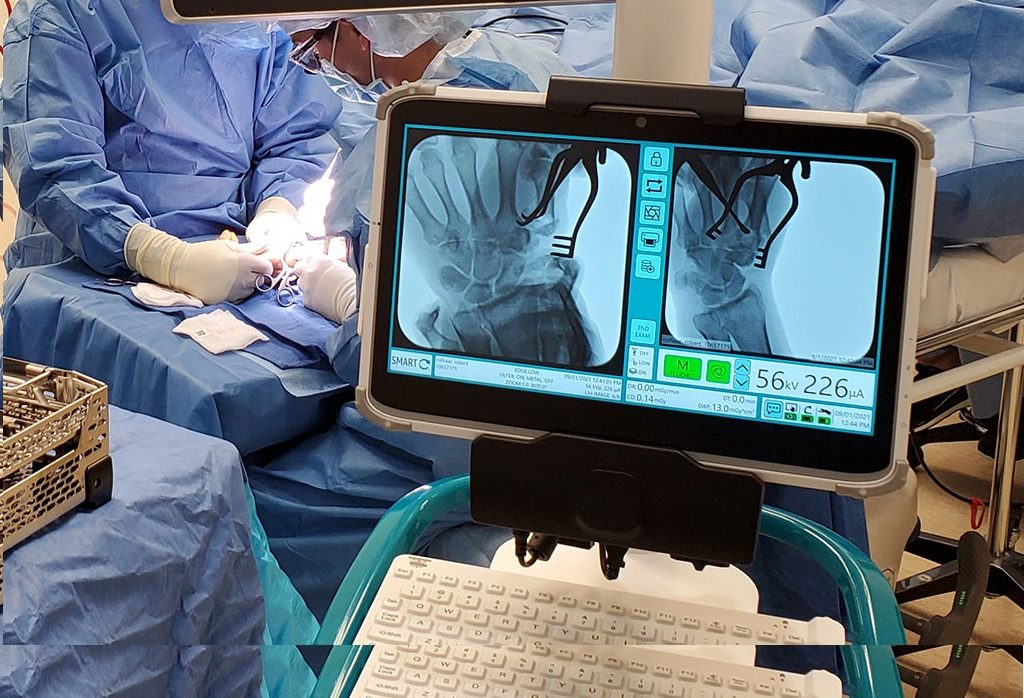
In the ever-evolving landscape of healthcare, technology continues to play a pivotal role in improving patient outcomes and accessibility to medical services. One significant advancement in this domain is the use of medical tablets as portable imaging devices, particularly for use in the field and locations with unstable power.
These versatile computers are transforming the way medical professionals diagnose and treat patients, especially in scenarios where traditional imaging infrastructure is lacking. This article explores the innovative concept of utilizing medical tablets for portable imaging and its potential impact on field hospitals and remote healthcare settings.
The Role of Medical Tablets in Portable Imaging
Medical tablets, equipped with high-resolution displays and powerful processing capabilities, are now being harnessed to perform imaging tasks that were once restricted to larger and less portable machines.
The ability to capture, view, and share medical images in real-time has become an essential component of modern healthcare practices. These tablets offer healthcare professionals the flexibility to perform imaging procedures anywhere, including remote locations that lack the technological infrastructure of traditional hospitals.
Anywhere Portable Imaging with Medical Tablets
Medical tablets are equipped with cutting-edge imaging capabilities that enable healthcare providers to perform essential diagnostic procedures on-site, minimizing the need for patient transportation and reducing precious time lost in transit. In field hospitals, where immediate decisions can make a difference, these computers offer real-time access to critical medical data.
Whether it’s conducting point-of-care ultrasounds or capturing x-ray images in remote locations, medical tablets empower healthcare teams to swiftly diagnose and initiate appropriate treatment plans. This not only streamlines the care process but also enhances patient outcomes, as interventions are implemented promptly, contributing to a higher likelihood of successful recovery.
Medical professionals are provided with innovative solutions that enable them to conduct imaging procedures in various environments, ranging from field hospitals to emergency response situations. The utilization of medical tablets in such scenarios offers immediate access to diagnostic information, facilitating quicker decision-making and treatment planning.
A Prime Example: Portable X-Ray Kit for Veterinarians
The application of medical tablets as portable imaging devices extends beyond human healthcare. Veterinary medicine also benefits from this technology. The integration of medical tablets into veterinary practice empowers veterinary professionals with on-site imaging and diagnostic capabilities.
Veterinary practitioners can now perform real-time x-rays, ultrasounds, and other imaging procedures directly in the field, eliminating the need for transporting animals to off-site facilities. This not only minimizes stress for the animals but also expedites the diagnostic process, allowing for prompt treatment decisions. Whether attending to large farm animals or small domestic pets, rugged medical tablets provide veterinarians with valuable insights for accurate diagnoses and tailored treatment plans.
Empowering Healthcare Professionals
Medical tablets designed for portable imaging empower healthcare professionals with tools that enable them to provide comprehensive care regardless of their location. The ease of use, intuitive interfaces, and connectivity options of these tablets allow medical practitioners to capture, analyze, and share medical images with ease. This collaborative approach promotes interdisciplinary consultation, even in remote settings, leading to more accurate diagnoses and treatment plans.
In the dynamic landscape of healthcare, innovation continues to drive improvements in patient care and accessibility to medical services. The emergence of medical tablets as portable imaging devices marks a significant milestone in this journey. The ability to perform imaging procedures in the field, even in the absence of traditional technology infrastructure, opens new avenues for delivering timely and effective healthcare.
As medical tablets become more integrated into medical practices, they hold the promise of revolutionizing field hospitals, remote clinics, and emergency response situations, ultimately enhancing patient care and outcomes on a global scale.

